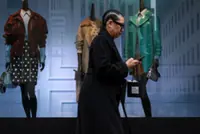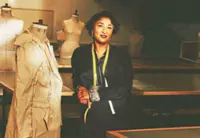Issey Miyake poses at the 2009 exhibition "U-Tsu-Wa" in Tokyo, Japan. Photo: Reuters
Fashion innovator Issey Miyake shook up Parisian style with his highly wearable avant-garde designs, saying he was driven to create clothes that "bring beauty and joy" after witnessing the horrors of Hiroshima.
Alongside Rei Kawakubo and Yohji Yamamoto, Miyake was part of a wave of young Japanese designers who made their mark in the French capital from the mid-1970s, following the lead of fashion greats Kenzo Takada and Hanae Mori.
Already a subscriber? Log in
Save 30% OFF The Star Digital Access
Cancel anytime. Ad-free. Unlimited access with perks.





